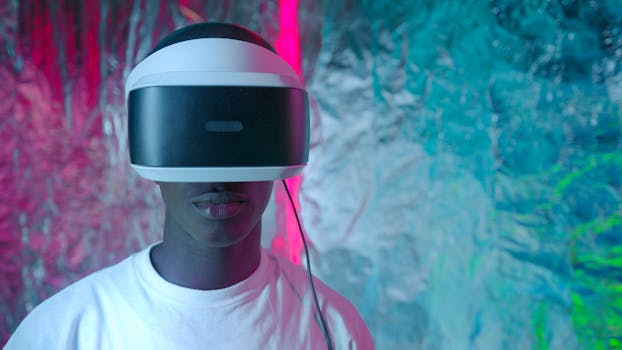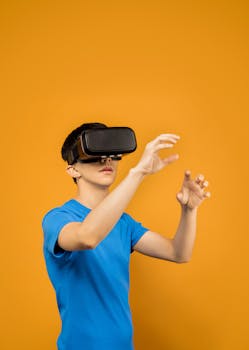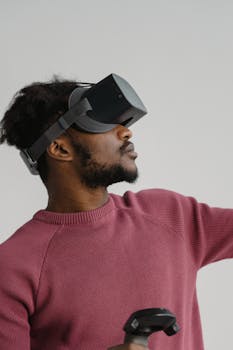Step into a living room, and you’ll likely find someone using a device that senses motion, touch, or even gestures. Entertainment sensors now blend subtly with life, turning everyday moments into interactive experiences that feel natural.
With entertainment sensors, screens no longer act as mere windows; they respond to how we move, speak, or sometimes even feel. These sensors have amplified immersion, sharply changing what people expect from movies, games, and social events.
Ready to explore what’s driving these bold shifts? This article breaks down the tech, the real results, and actionable steps to help you understand, test, or even join the wave of entertainment sensor innovation.
Touch, Motion, and Sound: Making Interactions Personal and Playful
New entertainment sensors deliver sensations, not just data. Touchscreens, gyroscopes, and microphones together build entertainment where the audience feels invited, not separated, from the action.
When you swipe a tablet or wave your arms to guide a game character, layered sensors translate intention into visible impact. Tiny gestures become commands, helping people feel active rather than just watching passively.
Touch Sensors: Reimagining the Screen as Playground
Multi-touch panels sense pressure, speed, and angle—allowing apps to react to a flick, a squeeze, or a tap. On a music app, this means simulating a real piano’s nuance, with soft or hard touches yielding different notes.
Artists use touch-sensitive displays for live performances, looping and mixing sounds by dragging fingers in different directions. Multi-user touch tables help families paint, play, or solve puzzles together, the sensor distinguishing whose finger is whose.
This approach makes digital activities feel closer to old-school crafts. Like clay, the medium responds to every touch, letting creativity emerge from small, familiar movements.
Motion Sensors: Letting the Body Lead Play
Accelerometers and gyroscopes turn game controllers—and even phones—into active inputs. Players stand, squat, and move arms to dodge virtual objects or perform in sports simulations.
Fitness apps measure stride, jump height, or even simulate yoga adjustments, giving performance feedback. Interactive art uses motion sensors to invite bystanders to “paint” with body movement.
Motion-based entertainment feels communal, echoing backyard games: you direct the action through physical participation. The experience grows social and memorable, with sensors amplifying shared energy.
Comparing Key Entertainment Sensor Technologies
| Sensor Type | Primary Use | Example in Entertainment | Next Action for Readers |
|---|---|---|---|
| Touch Sensor | Surface interaction | Multi-touch tablets | Try a drawing app to test pressure sensitivity |
| Motion Sensor | Detecting movement/tilt | Active fitness games | Play a motion-controlled game, notice calibration |
| Proximity Sensor | Detecting nearby objects | VR hand tracking | Move hands toward a device, see response |
| Light Sensor | Ambient brightness transfer | Screen dimming in AR | Switch rooms to see display adaptation |
| Microphone | Sound input and control | Voice-activated karaoke | Try a voice assistant app, note response time |
Haptic Feedback Creates Realistic Sensations
Haptic sensors let users ‘feel’ entertainment, bridging the gap between physical and digital. The best systems go beyond simple vibration, delivering rich, layered sensations that mimic real-world textures and actions.
Pressure and vibration modules are now embedded in controllers, wearables, and even clothing. These systems allow for more immersive feedback, from the gentle tap of rainfall in VR to the thump of an action movie explosion.
Layered Haptics Enhance Engagement
Advanced haptics let developers create sequences of sensations—short pulses for drumming, complex vibrations for walking on gravel. This feeds back information quickly and intuitively, so players adjust in real time during gameplay or interaction.
- Trigger specialized haptic patterns: Use an app with customizable vibrations, notice how they simulate texture or impact for accessibility or deeper immersion.
- Wear smart clothing: Test jackets with inbuilt sensors that pulse or squeeze gently in sync with media, giving physical cues and synchronizing attention.
- Explore VR gloves: Experience simulated pushback and resistance while grabbing virtual objects or tools, allowing for more natural interactions than a standard controller.
- Try mobile alerts: Switch up long, sharp, and pulsing vibrations to identify messages or calls without seeing the screen, improving accessibility and attention management.
- Experiment with interactive toys: Let kids trigger lights, sounds, and movement by pressing or hugging toys that respond through embedded sensors, bridging digital and physical play.
Each haptic device provides cues matched to context, making digital entertainment easier to navigate and more satisfying to control. The distinction between real and virtual sensations blurs, deepening player involvement.
Building Emotional Impact with Haptics
Game designers use environmental vibrations to evoke tension—heartbeat simulations in horror scenes, or soft tremors during emotional moments. The right feedback turns predictable events into memorable stories, adding another emotional layer.
- Synchronize controller patterns with dramatic sound cues to amplify story beats.
- Set a soundtrack to trigger distinct, rhythmic pulses for action sequences, heightening engagement.
- Use gentle taps to signal choices in branching narratives, guiding without distracting.
- Alert users of virtual proximity or danger through tailored vibration strengths, letting them react faster.
- Deploy multi-channel haptic devices for concerts, translating music into waves felt on the skin, blending senses for deeper immersion.
Haptics extend way beyond simple jolts, crafting full-body experiences that stay in memory much longer than words or visuals alone. For creators, this offers a new palette for emotional storytelling and physical excitement.
Gesture and Voice: No-Contact Control, Limitless Potential
Gesture sensing cameras and microphones unlock contactless control, letting users direct entertainment with body language or spoken words, surpassing traditional buttons or remotes in convenience and accessibility.
Wave to switch scenes or call out commands to adjust volume from across the room. Entertainment sensors are now so sensitive they can discern between gestures for different games, users, or moods.
Gesture Recognition Expands Expressive Input
Modern depth-sensing cameras spot fine hand signals and interpret shape, speed, and intent. Stand in front of an interactive display, and the system maps your outline for menu navigation, picture drawing, or even musical performance.
Some theaters use gesture controls to allow audiences to “vote” for movie direction, lighting, or music. In museums, visitors wave hands to manipulate digital artifacts on screen, learning through action rather than labels.
At home, kids choreograph motion games, using arm sweeps, jumps, or subtle nods. These sensors value inclusiveness, giving control even to those who can’t use traditional inputs easily.
Voice Commands Turn Talk into Action
Microphones pick up speech, even with background noise, to let people control shows, music, or trivia games. Instead of navigating menus, speak “Play the next episode,” and the system recognizes intent instantly.
Games adapt to player shouts, whispers, or keywords—responding with changes in story or gameplay. Smart speakers in living rooms pick up family discussions, using context to serve up media everyone enjoys.
This seamless integration makes voice one of the most natural ways to steer entertainment, especially for those who prefer talking over tapping or moving.
Biofeedback Sensors: Tailoring Experiences Based on Feelings
Entertainment sensors no longer just observe action—they also monitor physiological signals. Heart rate monitors and skin conductivity sensors help games and films adapt to the user’s emotional state, customizing pace or tension.
Pulled from fitness, these sensors now shape interactive narratives. If your pulse spikes, a game could reveal new paths or gently slow down, matching your excitement with tailored content difficulty.
Adaptive Narratives React to Audience Emotions
Directors and writers now experiment with plots that branch according to audience signals. In one prototype, horror film music builds only if average heart rate reaches a set threshold, pacing the experience in sync with group reactions.
Solo players notice subtle adjustments, such as a calming sequence if skin sensors detect stress, or more challenges if heart rate signals boredom. Adaptive design ensures every playthrough feels fresh and responsive.
This blend of emotion and entertainment removes the sense of watching a fixed script, making audiences collaborators in the narrative’s pace and mood.
Real-Time Data Feeds Drive Group Experiences
Concert organizers and game streamers use real-time biofeedback to adjust lighting, soundtracks, or intensity. Crowd-worn wristbands sync performance cues to collective excitement, energizing both performer and audience.
Fitness competitions broadcast live stats, letting friends cheer runners as heart rates climb, or offer encouragement if stress signals register. Shared data amplifies connection, making remote participation feel immediate.
By incorporating these entertainment sensors, venues and creators can stage events that literally pulsate with the crowd’s energy, unlocking a new level of group immersion.
Spatial and Environmental Sensors: Context-Aware Smart Play
Environmental sensors detect light, temperature, and presence to make entertainment more adaptive. Smart lights adjust hue to match a movie’s mood; home theaters dim or shift soundtrack as someone enters or leaves the space.
Spatial awareness is the foundation of location-based entertainment. Escape rooms, theme parks, and AR games track physical movement to trigger hidden effects, personalize clues, or change paths based on guest position.
Augmented Reality Grows Immersive Worlds
AR headsets mix GPS, compass, and proximity input. If you turn left at a virtual junction or move closer to a digital object, the experience shifts. Outdoor stories or games reward exploration, guiding users using sensors embedded in ordinary phones.
City tours use similar approaches: guide apps transform landmarks into branching stories. When you reach a statue, the app launches targeted trivia or a character interaction based on your GPS and compass data.
These context-aware shifts create living narratives, making even simple walks vivid and unpredictable adventures.
Venue Adaptations for Seamless Experiences
In concert halls, location sensors guide lighting rigs to spotlight moving performers. Smart seating systems adjust armrest LEDs as guests sit, creating coordinated light shows on arrival.
Theme park rides use wristbands to identify visitors and customize greetings, adjust ride intensity, or snap in-ride photos at just the right moment. These adjustments happen in the background, fine-tuning flow without distracting from the experience.
The goal in both public and home venues is consistency—minimizing disruptions and maximizing attention on what matters: the fun, story, or spectacle at hand.
Wearables and Personal Devices Extend Interaction Everywhere
Wearable sensors take entertainment on the go. Smartwatches, rings, and headphones sense proximity, position, and bio-signals, letting users direct content and respond intuitively wherever they are.
Earbuds pause music when removed, while tracking activity sensors push playlists when you start running. Smart glasses overlay hints as you play scavenger hunts. These devices augment entertainment even away from stationary screens.
Personalizing Play in Shared Spaces
With entertainment sensors in wearables, each session feels custom. Your favorite songs start when headphones detect movement; interactive stories unfold based on walking pace or hand gestures, as detected by a fitness band.
Family members can share devices yet receive different responses—content recommendations, volume adjustments, or even language settings—all based on the device’s ability to detect who’s present and how engaged they are.
This tailored approach encourages collaboration while giving each participant control, making shared entertainment less about compromise and more about inclusion.
Integrating Movement and Sound through Smart Devices
Smart rings double as gesture controllers: flick a finger to skip tracks, squeeze to change volume. These tools carve away friction, providing subtle ways to guide entertainment without breaking conversation, cooking, or a workout flow.
Voice-activated headphones open hands-free direction for everyone, whether running, cycling, or cleaning. Say “next video” or “turn up bass,” and the device responds instantly, making multitasking at home or in transit seamless.
As entertainment sensors multiply across personal tech, users orchestrate their own experiences almost subconsciously, integrating play and leisure deeply into routine life.
Comparing Sensor-Driven Platforms for Everyday Use
To choose the right entertainment sensors for your space, weigh the target experience—social, solo, family, or creative. Each setup offers versatility, but knowing strengths accelerates smart decisions and stops wasted effort.
Some sensors focus on health or fitness, while others boost creativity or deliver robust multi-user access. The right pick lets every movie night or game session shine, minimizing frustration or technical misfires.
Standalone Systems Deliver Immediate Results
Self-contained devices, like gaming consoles with built-in motion and haptic feedback, offer plug-and-play simplicity. You just connect, calibrate briefly, and let the sensors guide your interactions, with minimal technical setup needed.
VR headsets or smart speakers work for all-ages, reacting to gesture, voice, or body movement almost instantly. These platforms provide reliable entertainment sensors that handle everything from party games to solo exploration.
The key is maintenance: update firmware regularly, reset calibration when accuracy slips, and check battery levels to ensure consistent, frustration-free usage.
Connected Devices Multiply the Fun
Networked wearables and mobile sensors thrive where collaboration matters. Set up game sessions with multiple phones or fitness bands, letting each device track and share results for group challenges or crowd-driven trivia.
Integration with home automation platforms lets entertainment sensors switch lighting, pause content, or trigger music with a gesture or spoken word. This centralizes control, saving time and keeping the focus on play—not troubleshooting settings.
Sharing sensor data—like heart rate highs or drawn artwork—makes social gaming lively and memorable, spurring real laughter and lasting competition.
| Platform | Main Sensor Types | Ideal For | Optimization Step |
|---|---|---|---|
| Console & VR Kits | Motion, Touch, Haptic | Solo/Family Gaming | Calibrate each time you change location |
| Wearables | Biofeedback, Proximity, Gesture | Fitness, Personal Play | Synchronize device profiles to personalize reactions |
| Smart Speakers | Microphone, Light, Voice Recognition | Social Trivia, Media Control | Update voice models for clearer responses |
| Mobile Phones | Touch, Gyroscope, Location | On-the-Go Games, AR Apps | Test sensors outdoors vs. indoors for accuracy |
| Augmented Reality Headsets | Spatial, Motion, Camera | Exploratory Gaming, Venue Tours | Recalibrate before starting each new session |
Entertainment Sensors Will Shape the Next Generation of Creative Play
This article unpacked recent breakthroughs that have embedded entertainment sensors into every tool, event, and device, shaping how people create, share, and respond to stories or games.
From multi-touch and motion sensors in your pocket to biofeedback wearables that adjust content mid-experience, each sensor opens a richer palette of interactive possibilities, anchoring entertainment closer to real-life behavior and emotion.
Whether you’re developing content, designing events, or simply enjoying a movie night, understanding and embracing these entertainment sensors ensures you’re ready for the next evolution of creativity and play at home and beyond.



